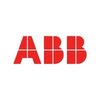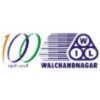Filter interviews by
Action Construction Equipment Safety Officer Interview Questions and Answers
Action Construction Equipment Safety Officer Interview Experiences
1 interview found
I applied via Walk-in
(3 Questions)
- Q1. Safety department , work experience
- Q2. Family background
- Q3. Personal details
Interview Preparation Tips
Top trending discussions






Interview questions from similar companies

Safety Officer Interview Questions & Answers
Isgec Heavy Engineeringposted on 15 Oct 2021
I applied via Referral and was interviewed before Oct 2020. There was 1 interview round.
Interview Questionnaire
1 Question
- Q1. All question will asked on lifting tools and tackles & hot work.
Interview Preparation Tips

Safety Officer Interview Questions & Answers
Isgec Heavy Engineeringposted on 23 Mar 2024
I applied via Referral and was interviewed in Sep 2023. There was 1 interview round.
(1 Question)
- Q1. Year of experience Family members Past experience etc

I applied via Naukri.com and was interviewed in Oct 2023. There was 1 interview round.
(1 Question)
- Q1. ISO 45001 , HIRA ,JSA , MOCKDRILL , EMERGENCY EVACUATION PLAN, DOCUMENTATION

I applied via Company Website and was interviewed in Feb 2023. There were 3 interview rounds.

(3 Questions)
- Q1. Thay are arrenge my interview date.?
- Q2. Conformation by mail my interview schedule?
- Q3. Before starting the interview HR team only listening.?
(10 Questions)
- Q1. Introduce yourself and tell me about your family background.?
- Q2. What is your daily routine activity and duties?
- Q3. What is safety equipment you are carry on the duty.
- Ans.
As a Safety Officer, I carry a range of safety equipment including a first aid kit, fire extinguisher, safety vest, and hard hat.
First aid kit for emergency medical situations
Fire extinguisher for fire emergencies
Safety vest for visibility and identification
Hard hat for head protection
- Q4. What is working at height safety as per standard?
- Ans.
Working at height safety involves measures to prevent falls and injuries when working at elevated levels.
Employers must conduct risk assessments and provide appropriate safety equipment and training.
Workers must use the provided safety equipment and follow safe work procedures.
Examples of safety equipment include harnesses, guardrails, and safety nets.
The standard also includes requirements for inspection and maintenan...
- Q5. If you don't have any safety equipment and documents how to complete the work ?
- Ans.
I would immediately stop the work and assess the situation to determine the necessary safety equipment and documents.
Stop the work immediately to prevent any potential hazards or accidents.
Assess the situation to determine the necessary safety equipment and documents.
Obtain the required safety equipment and documents before resuming work.
Communicate the importance of safety equipment and documents to all team members t
- Q6. What is the hazard in oil and gas field ?
- Ans.
The hazards in oil and gas field include fire, explosion, toxic gas exposure, falls, and equipment failure.
Fire and explosion risks due to the presence of flammable materials
Toxic gas exposure from leaks or releases
Falls from heights during drilling or maintenance activities
Equipment failure due to high pressure or temperature
Environmental hazards such as oil spills or gas leaks
Human error or negligence leading to acci
- Q7. Explain basis safety equipment and working procedure ?
- Ans.
Safety equipment and working procedures are essential for preventing accidents and injuries in the workplace.
Safety equipment includes personal protective equipment (PPE) such as hard hats, safety glasses, gloves, and safety shoes.
Working procedures involve following established protocols for tasks such as lockout/tagout, confined space entry, and working at heights.
Regular safety training and communication are also im...
- Q8. How to conduct a JSA and Risk assessment?
- Ans.
JSA and risk assessment involve identifying hazards, evaluating risks, and implementing controls.
Identify the job or task to be analyzed
Break down the job into steps
Identify potential hazards for each step
Evaluate the risks associated with each hazard
Implement controls to eliminate or reduce the risks
Review and update the JSA and risk assessment regularly
- Q9. What you check before starting the work at height activity?
- Ans.
Before starting work at height, I check...
The condition of the equipment to be used
The stability of the work surface
The weather conditions
The availability and proper use of personal protective equipment
The presence of a rescue plan
The competency of the workers involved
The communication system in place
The adherence to safety regulations and procedures
- Q10. What is the requirement of besic PPE's in plant ?
- Ans.
Basic PPEs are essential for plant safety. They include hard hats, safety glasses, earplugs, gloves, and safety shoes.
Hard hats protect the head from falling objects and impacts.
Safety glasses protect the eyes from flying debris and harmful substances.
Earplugs protect the ears from loud noises and prevent hearing loss.
Gloves protect the hands from cuts, burns, and chemical exposure.
Safety shoes protect the feet from fa...
Interview Preparation Tips
- Fire Fighting
- Safety Officer Activities
- Scaffold
- HSE Training
- Daily routine
- Fire hazard

I applied via Naukri.com and was interviewed in Dec 2022. There were 2 interview rounds.

(3 Questions)
- Q1. No comments if u are experience person then not required.
- Q2. Interview question on ur profession
- Q3. Always remind everything on ur job
Interview Preparation Tips

I applied via Naukri.com and was interviewed before Dec 2021. There were 2 interview rounds.

(5 Questions)
- Q1. Preparation of Job Safety Analysis
- Q2. Preparation of Hazard Identification & Assessment of Risk & Opportunity
- Ans.
The preparation of hazard identification and assessment of risk and opportunity is a crucial task for a Safety Officer.
Start by conducting a thorough hazard identification process to identify potential risks and hazards in the workplace.
Assess the identified hazards by evaluating the likelihood and severity of each risk.
Use various risk assessment techniques such as risk matrices, fault tree analysis, or bowtie analysi...
- Q3. Knowledge about Risk Matrix
- Q4. Hazards involved in Power Plants
- Ans.
Power plants have hazards such as electrical, chemical, thermal, and radiological hazards.
Electrical hazards include electrocution, arc flashes, and electrical burns.
Chemical hazards include exposure to toxic chemicals and gases.
Thermal hazards include burns and heat stress.
Radiological hazards include exposure to ionizing radiation.
Other hazards include fire, explosion, and mechanical hazards.
Examples of power plants ...
- Q5. Knowledge about PPEs
Interview Preparation Tips

(1 Question)
- Q1. Boiler operation safety
Interview Preparation Tips

I applied via Naukri.com and was interviewed in Oct 2023. There were 3 interview rounds.
(2 Questions)
- Q1. Iso 450001 topics question
- Q2. Leagal Compliances and safety peactices
(1 Question)
- Q1. What is safety key ponts of boilers.
- Ans.
Key safety points of boilers include proper maintenance, regular inspections, and adherence to safety protocols.
Regular maintenance to prevent leaks and malfunctions
Proper ventilation to avoid carbon monoxide buildup
Adherence to safety protocols such as wearing protective gear and following operating procedures
Regular inspections to identify potential hazards and address them promptly
(3 Questions)
- Q1. How much type of boilers.
- Ans.
There are mainly two types of boilers: fire tube boilers and water tube boilers.
Fire tube boilers have hot gases passing through the tubes which are surrounded by water.
Water tube boilers have water flowing inside the tubes while hot gases surround them.
Examples include steam boilers, hot water boilers, and industrial boilers.
- Q2. During emergency in operation what step you take as a safety officer.
- Q3. Boiler act questions
Interview Preparation Tips
Legal compliance, Safety practices,
Safety in Operational of boiler.

Around the construction site
Chimney installation
Electrical hazard
Height work Safety
HIRA , JSA
Chimney installation
(2 Questions)
- Q1. Why chnge your current job
- Q2. What is your expectations
Interview Preparation Tips
Always free mind hokar interview Dena h
Action Construction Equipment Interview FAQs
Tell us how to improve this page.
Action Construction Equipment Interviews By Designations
- Action Construction Equipment Assistant Manager Interview Questions
- Action Construction Equipment Assistant Sales Manager Interview Questions
- Action Construction Equipment Engineer Interview Questions
- Action Construction Equipment Senior Engineer Interview Questions
- Action Construction Equipment Quality Engineer Interview Questions
- Action Construction Equipment Technical Support Engineer Interview Questions
- Action Construction Equipment Production Interview Questions
- Action Construction Equipment Engineering Manager Interview Questions
- Show more
Interview Questions for Popular Designations
- Safety Supervisor Interview Questions
- Senior Safety Officer Interview Questions
- Fire & Safety Officer Interview Questions
- Safety Engineer Interview Questions
- Safety Manager Interview Questions
- Drug Safety Associate Interview Questions
- Safety Supervisor, Safety Officer Interview Questions
- Safety Executive Interview Questions
- Show more
Action Construction Equipment Safety Officer Interview Process
based on 2 interviews
Interview experience
Safety Officer Interview Questions from Similar Companies
Action Construction Equipment Safety Officer Reviews and Ratings
based on 1 review
Rating in categories
|
Assistant Manager
186
salaries
| ₹3.2 L/yr - ₹10.4 L/yr |
|
Senior Engineer
124
salaries
| ₹3 L/yr - ₹7.2 L/yr |
|
Engineer
111
salaries
| ₹2 L/yr - ₹6 L/yr |
|
Deputy Manager
87
salaries
| ₹6.4 L/yr - ₹13 L/yr |
|
Production Engineer
82
salaries
| ₹2 L/yr - ₹5.4 L/yr |

Thermax Limited

ABB

Isgec Heavy Engineering

Kirloskar Oil Engines
- Home >
- Interviews >
- Action Construction Equipment Interview Questions >
- Action Construction Equipment Safety Officer Interview Questions











